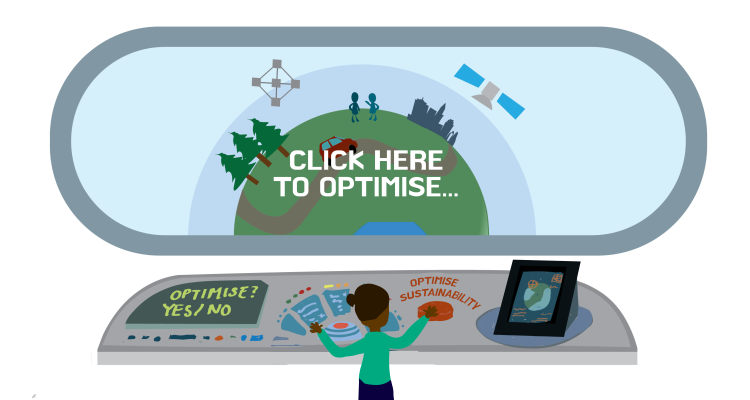
News
Will smart technology really solve our sustainability problems?
Around the world smart technologies are used to create solutions for sustainability issues. According to ENP researchers, Sake Kruk, Sanneke Kloppenburg and Aarti Gupta, this is not without risk. Read their recently published NRC Opinion article, 'Will smart technology really solve our sustainability problems'.
From energy meters to self-driving cars and from refrigerators to health apps: smart technology driven by self-learning algorithms is being used in all kinds of devices to make our daily lives more comfortable and sustainable. But what if we were also able to solve major global sustainability challenges using algorithms? Might we also be able to design a smart planet, or an algorithm for a sustainable earth?
Across the world, more and more government agencies, companies and NGOs have set their sights on achieving this ambition. The European Union, for example, is investing eight billion euros in developing a high-precision 'digital twin' of the earth to monitor and predict environmental changes. This digital twin will provide a realistic digital representation of the earth in real time, which can then be used to identify and chart climate risks and calculate the effect of various climate policies.
Microsoft is also working on a 'planetary computer' that will be able to monitor and manage the earth based on huge volumes of data analysed by smart algorithms. The idea behind these projects is that we can use sensors and satellites, for example, to collect more and more data that we can then analyse in an automated way. Not only should this lead to a better understanding of environmental and climate risks, but it should also facilitate smart decision-making by predicting the effects of various environmental measures.
Being able to make decisions based on 'objective' data because they are more effective may sound like a great idea, but is such a technological fix really all that effective and non-political? Well, not necessarily.
Making Choices
Firstly, digital data and smart technology are changing the way we look at and understand environmental problems. More data doesn’t automatically result in better regulations. Collecting data means that choices have to be made: what are we going to measure to obtain a representative picture of the environmental problem? How will something be measured?
How will data be analysed? Who decides that? And what does it actually tell us? For example, we can use satellite images to calculate the amount of forest on Earth, which then allows us to see from space where forest fires, logging and resource extraction are taking place. If that then forms the basis for regulation, we run the risk of focusing only on those immediate causes (and culprits!), such as those areas in the Amazon where widespread illegal deforestation is taking place.
But why are forests being cut down in the first place? International societal drivers such as meat consumption and the use of palm oil are left out of the picture. A planetary computer can visualise and analyse certain aspects of environmental problems, but there is a risk that doing so may overlook the social and political choices underlying those problems.
Automated decision-making
Secondly, our increasing reliance on digital technology is also reshaping who can and should have a say in how global environmental issues are addressed. Should we leave the task of identifying climate change to companies like Microsoft? And who gets access to this data? Technology companies are also playing an increasingly important role in solving environmental issues as gatekeepers of the digital world. Also, the EU isn’t the only player currently working on a 'digital earth’; China is too. What are the geopolitical implications of these projects, and whose interests are served by them? For example, to what extent can countries and people most affected by climate change actually benefit from this technology?
And finally, the use of smart algorithms is opening up new ways of creating regulations. Algorithms can be used to automate the decision-making process. If we hone in on individual citizens, for example, a smart app can digitally 'nudge' someone towards making sustainable choices based on data. Digital nutritional advice only displays sustainable products, for example. Policymakers can use algorithms to simulate the outcomes of different policy interventions, thereby helping them to better anticipate the potential effects of their decisions. But to actually be able to decide what the 'best' option is, the algorithm needs to be programmed and trained. What criteria does the algorithm use to 'make decisions'? That's still a political choice.
So the question as to what a smart sustainable earth looks like isn’t so much a technological question as a political one. Digital technologies have the potential to play a major role in tackling environmental problems, but we can't expect them to be the solution to the complex social issues underlying them.